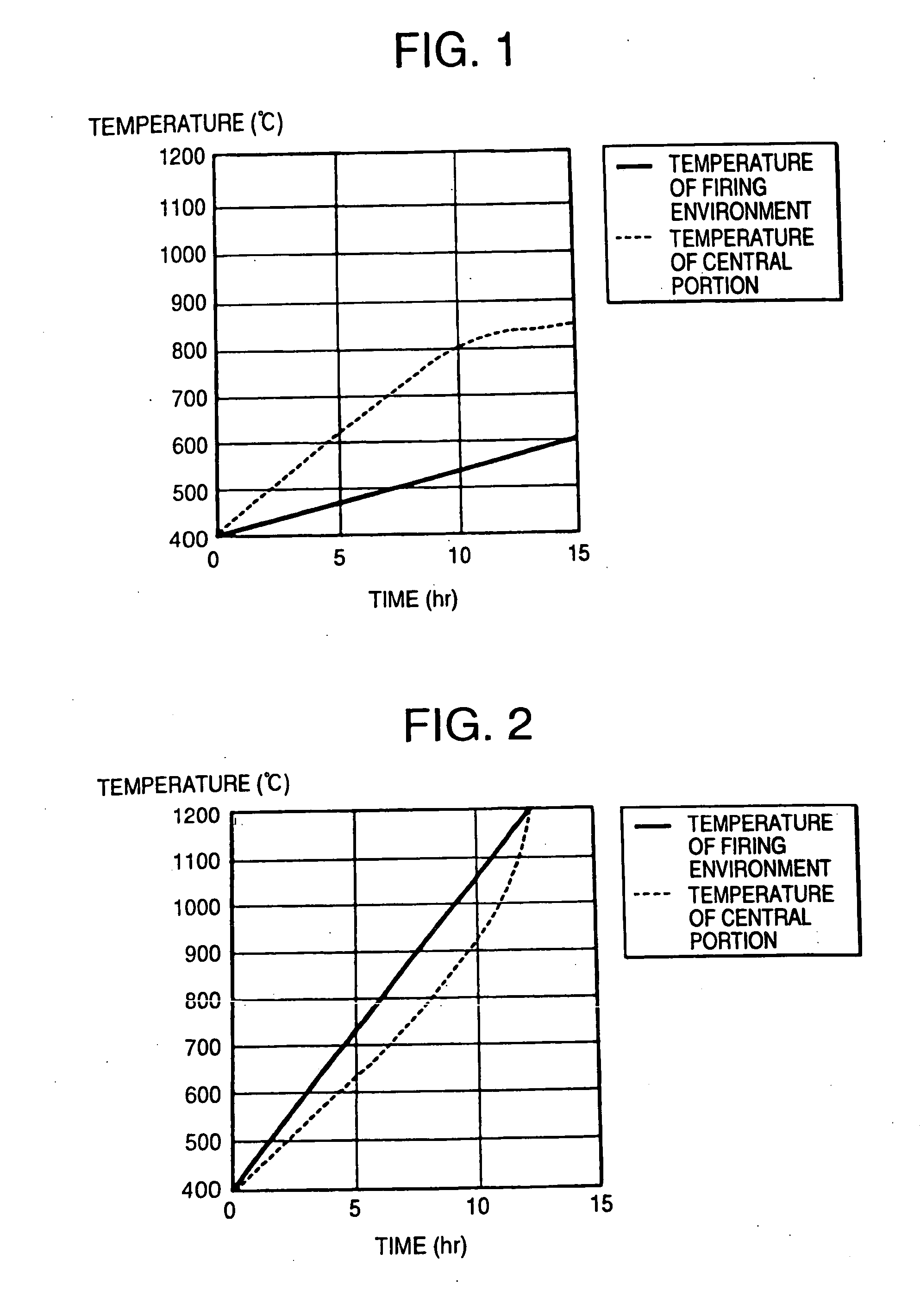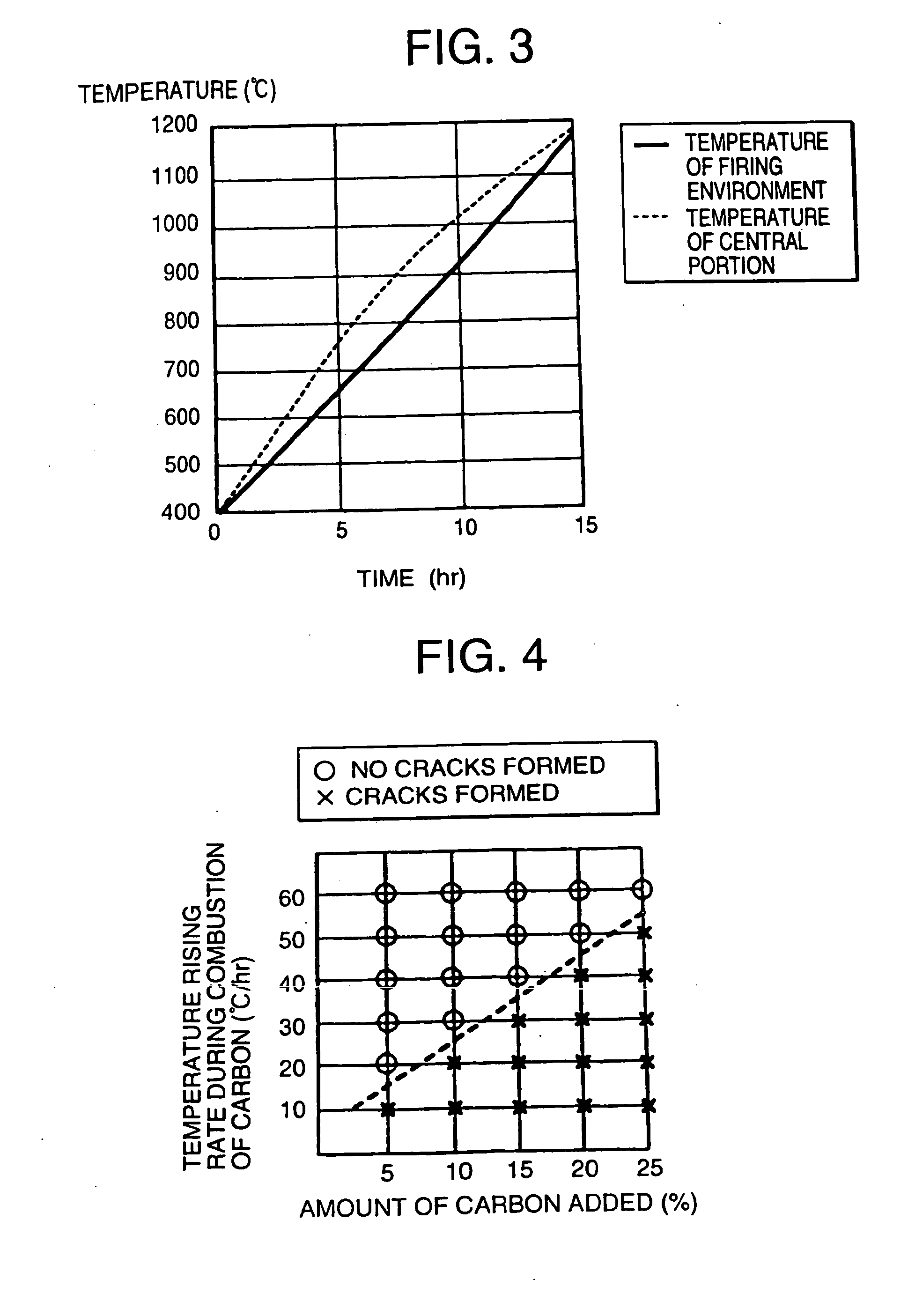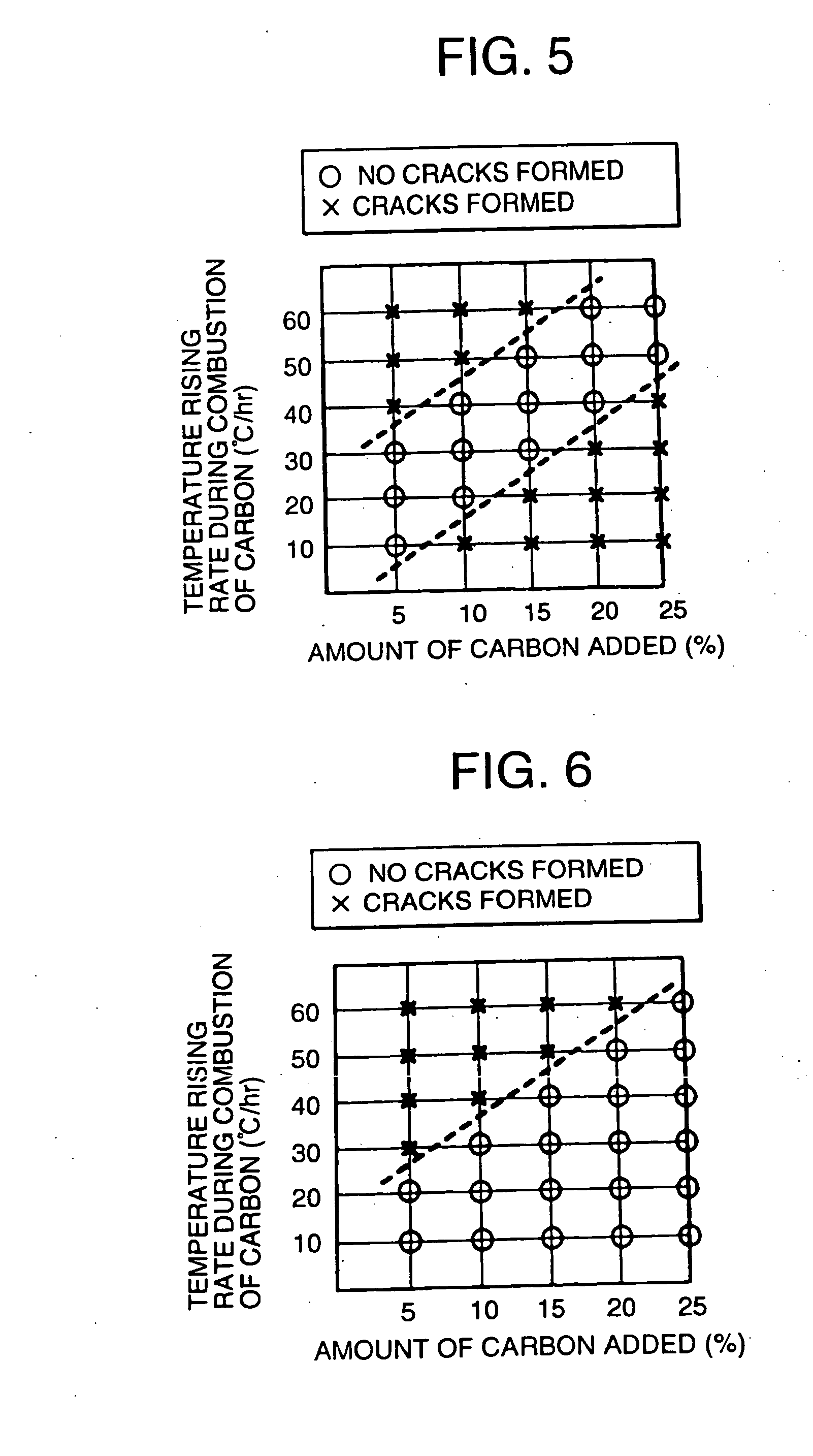Method for manufacturing a porous ceramic structure
a technology of porous ceramics and manufacturing methods, applied in the field of porous ceramic manufacturing methods, can solve the problems of large temperature difference between the central the external surface, large temperature rise rate, cracks at a portion of the molded article, etc., and achieve the effect of lowering porosity and high porosity
- Summary
- Abstract
- Description
- Claims
- Application Information
AI Technical Summary
Benefits of technology
Problems solved by technology
Method used
Image
Examples
example 1
Firstly, 39.8 wt % of talc (average particle diameter: 21 μm), 18.5 wt % of kaolin (average particle diameter: 11 μm), 14.0 wt % of alumina (average particle diameter: 7 μm), 15.2 wt % of aluminum hydroxide (average particle diameter: 2 μm), and 12.5 wt % of silica (average particle diameter: 25 μm) were mixed together so as to prepare a cordierite-forming raw material.
Then, a raw material containing 10.0 parts by mass of carbon (average particle diameter: 53 μm), 2.0 parts by mass of foamed resin (average particle diameter: 50 μm), 4 parts by mass of binder, 0.5 parts by mass of surfactant, and 31 parts by mass of water based on 100 parts by mass of the cordierite-forming raw material was charged into a kneader and kneaded for 30 minutes so as to obtain a puddle.
Then, the obtained puddle was charged into a vacuum kneading machine and kneaded into a cylindrical form which was then put in an extruder to be molded into a honeycomb form. Further, after subjected to dielectric dryi...
examples 8 and 9
Honeycomb structures were manufactured in the same manner as in Example 1 except that molded articles were fired in accordance with the temperature raising program 2 shown in Table 1, that a raw material containing 5.0 or 10.0 parts by mass of carbon (average particle diameter: 53 μm) based on 100 parts by mass of the cordierite-forming raw material was used, and the manufactured honeycomb structures had volumes shown in Table 4 (i.e., 3 L (size: φ150 mm×L150 mm) and 15 L (size: φ250 mm×L300 mm)). Production conditions and evaluation results are shown in Table 4 together with those of Example 7. In addition, manners in which temperatures of the central portions of the molded articles and the temperature of a firing environment increased are shown in FIG. 10.
TABLE 4Difference in Temp. betweenRate ofExternal Surface and CentralOccurrence ofVolumeAmount of carbon AddedTemp. RaisingPortion of Molded ArticleCracksSite Where(L)(Parts by +mass)Program(Max)(%)Cracks OccurredEx. 835No. 2−...
example 10
A honeycomb structure was manufactured in the same manner as in Example 1 except that molded article was fired in accordance with the temperature raising program 2 shown in Table 1, that a raw material containing 10.0 parts by mass of carbon (average particle diameter: 53 μm) and 2.4 parts by mass of a foamed resin (average particle diameter: 50 μm) based on 100 parts by mass of the cordierite-forming raw material was used, and the manufactured honeycomb structure had volume of 15 L (size: φ250 mm×L300 mm).
(Determination of Porosity)
The porosity each of the honeycomb structures of Comparative Example 7, and Examples 9 and 10, was calculated from the total pore volume of a specimen cut out from each structure of Comparative Example 7, and Examples 9 and 10, determined by using a mercury pressure injection type porosimeter produced by Micro-metrics Co., Ltd., taking that the true specific gravity of codierite is 2.52 g / cc.
Production conditions and evaluation results are shown i...
PUM
| Property | Measurement | Unit |
|---|---|---|
| Temperature | aaaaa | aaaaa |
| Temperature | aaaaa | aaaaa |
| Temperature | aaaaa | aaaaa |
Abstract
Description
Claims
Application Information
 Login to View More
Login to View More - R&D
- Intellectual Property
- Life Sciences
- Materials
- Tech Scout
- Unparalleled Data Quality
- Higher Quality Content
- 60% Fewer Hallucinations
Browse by: Latest US Patents, China's latest patents, Technical Efficacy Thesaurus, Application Domain, Technology Topic, Popular Technical Reports.
© 2025 PatSnap. All rights reserved.Legal|Privacy policy|Modern Slavery Act Transparency Statement|Sitemap|About US| Contact US: help@patsnap.com



